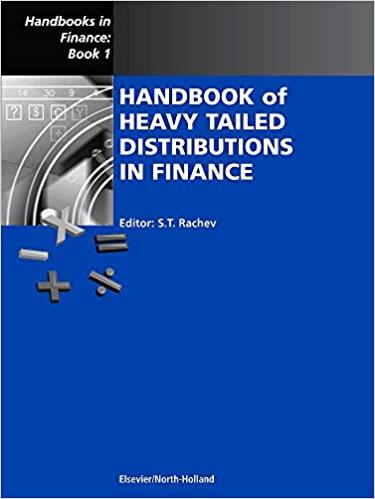Answered step by step
Verified Expert Solution
Question
1 Approved Answer
It doesnt show the other questions before answering a.... Low-regular-and-extra dividend policy Bennett Farm Equipment Sales, Inc. is in a highly cyclical business. Although the

It doesnt show the other questions before answering a....
Low-regular-and-extra dividend policy Bennett Farm Equipment Sales, Inc. is in a highly cyclical business. Although the firm has a target payout ratio of 35%, its board realizes that strict adherence to that ratio would result in a fluctuating dividend and create uncertainty for the firm's stockholders. Therefore, the firm has declared a regular dividend of $0.60 per share per year with extra cash dividends to be paid when earnings justify them. Earnings per share for the last several years are as follows: :: a. Calculate the payout ratio for each year on the basis of the regular $0.60 dividend and the cited EPS. b. Calculate the difference between the regular $0.60 dividend and a 35% payout for each year. c. Bennett has established a policy of paying an extra dividend of $0.25 only when the difference between the regular dividend and a 35% payout amounts to $1.00 or more. In which year would an extra dividend be paid? What would be done with the "extra" earnings that are not paid out? d. The firm expects that future earnings per share will continue to fluctuate but will remain above $2.73 per share in most years. What factors should be considered in making a revisin to the amount pais as a regular dividend? If the firm revises the regular dividend, what new amount should it pay? a. The payout ratio for year 2010 on the basis of the regular $0.60 dividend and the cited EPS is %. (Round to one decimal place.) Low-regular-and-extra dividend policy Bennett Farm Equipment Sales, Inc. is in a highly cyclical business. Although the firm has a target payout ratio of 35%, its board realizes that strict adherence to that ratio would result in a fluctuating dividend and create uncertainty for the firm's stockholders. Therefore, the firm has declared a regular dividend of $0.60 per share per year with extra cash dividends to be paid when earnings justify them. Earnings per share for the last several years are as follows: :: a. Calculate the payout ratio for each year on the basis of the regular $0.60 dividend and the cited EPS. b. Calculate the difference between the regular $0.60 dividend and a 35% payout for each year. c. Bennett has established a policy of paying an extra dividend of $0.25 only when the difference between the regular dividend and a 35% payout amounts to $1.00 or more. In which year would an extra dividend be paid? What would be done with the "extra" earnings that are not paid out? d. The firm expects that future earnings per share will continue to fluctuate but will remain above $2.73 per share in most years. What factors should be considered in making a revisin to the amount pais as a regular dividend? If the firm revises the regular dividend, what new amount should it pay? a. The payout ratio for year 2010 on the basis of the regular $0.60 dividend and the cited EPS is %. (Round to one decimal place.)Step by Step Solution
There are 3 Steps involved in it
Step: 1

Get Instant Access to Expert-Tailored Solutions
See step-by-step solutions with expert insights and AI powered tools for academic success
Step: 2

Step: 3

Ace Your Homework with AI
Get the answers you need in no time with our AI-driven, step-by-step assistance
Get Started


